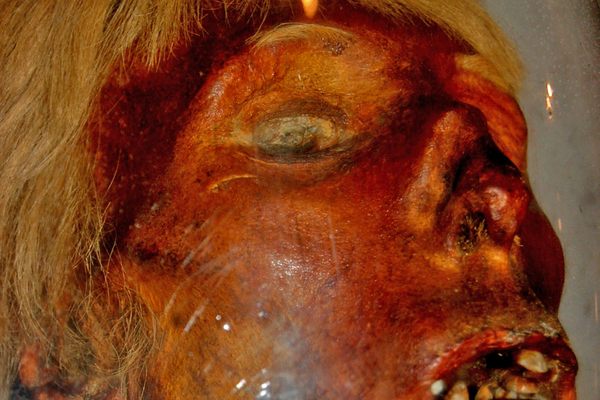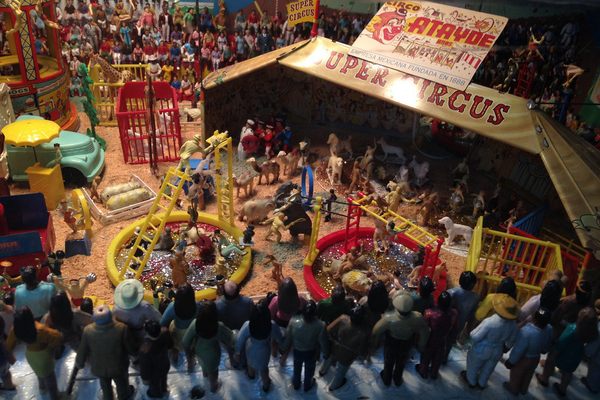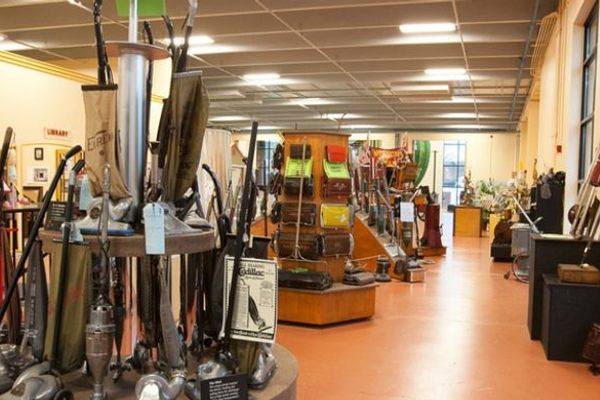In the Face of War, Ukrainian Collector Shares his Faces of Death
Death masks on display at One Street Museum in Kiev (courtesy the museum)
As the Russian “stealth war” on Ukraine steps out of the shadows and fighters on both sides of the conflict are killed on an increasing basis, a collector in Kiev has decided to launch a new exhibition examining the the image of death itself.
Calling the exhibit Ukrainian Pantheon, Dmitry Shlyonsky will be exhibiting some of his collection of 260 death masks at the One Street Museum in Kiev in celebration of the 23rd anniversary of Ukrainian independence. Death masks, which are made using wet plaster stripes laid over the face of the recently deceased, were used to capture the sculptural images of the dead for posterity and were often cast from the faces of great men and women, including Benjamin Franklin, Napoleon, Nietzsche, and many others.
Death masks on display at the Museum of Waxes in Prague (photograph by Curious Expeditions)
Collected over the last 12 years into what is thought to be the single largest collection of death masks in the world, the exhibition in Kiev will feature Ukrainian nationals, including Stepan Bandera, a famous anti-Soviet fighter, and Symon Petliura, who fought against Russia for Ukrainian independence after the Russian Revolution.
For Shlyonsky, a historian of death masks, these artifacts have never been more relevant. Quoted in the Daily Beast, Shlyonsky said: “We are worried about our independence, we are deeply concerned.” But despite being used to celebrate the history of Ukrainian independence the death masks also form a cultural tie that Russia and Ukraine share, going back to the desk mask of Peter the Great, and lasting well into the 20th century, with a rumored death mask of Boris Yeltsin.
Wax death masks Museum of Waxes in Prague (photograph by Curious Expeditions)
In 2013, a collection of 13 of Russian death masks, including Joseph Stalin, Leon Trotsky, and Vladimir Lenin went on display in the tunnels below Lenin’s former estate, as part of a Russian exhibition called Masks Shock. One space was left open at the end of the display. When asked, head researcher Natalia Mushits told reporters: “It’s for Putin.”
Ukrainians eagerly await the addition.
*Hat Tip to the Daily Beast. Another excellent death mask collection can be seen at the Laurence Hutton Collection of Life and Death Masks at Princeton University.
Museum of Waxes in Prague (photograph by Curious Expeditions)
Mary, Queen of Scots, 1542-1587 death mask on plaque, from effigy on tomb (courtesy Princeton University)
Life mask of Benjamin Franklin (courtesy Princeton University)
Newton, Isaac, Sir, 1642-1727 (courtesy Princeton University)
Pancho Villa’s Death Mask (photograph by Karen Neoh)
he Kriminalmuseum (Criminal Museum) in Vienna, Austria (photograph by Curious Expeditions)

















































Follow us on Twitter to get the latest on the world's hidden wonders.
Like us on Facebook to get the latest on the world's hidden wonders.
Follow us on Twitter Like us on Facebook